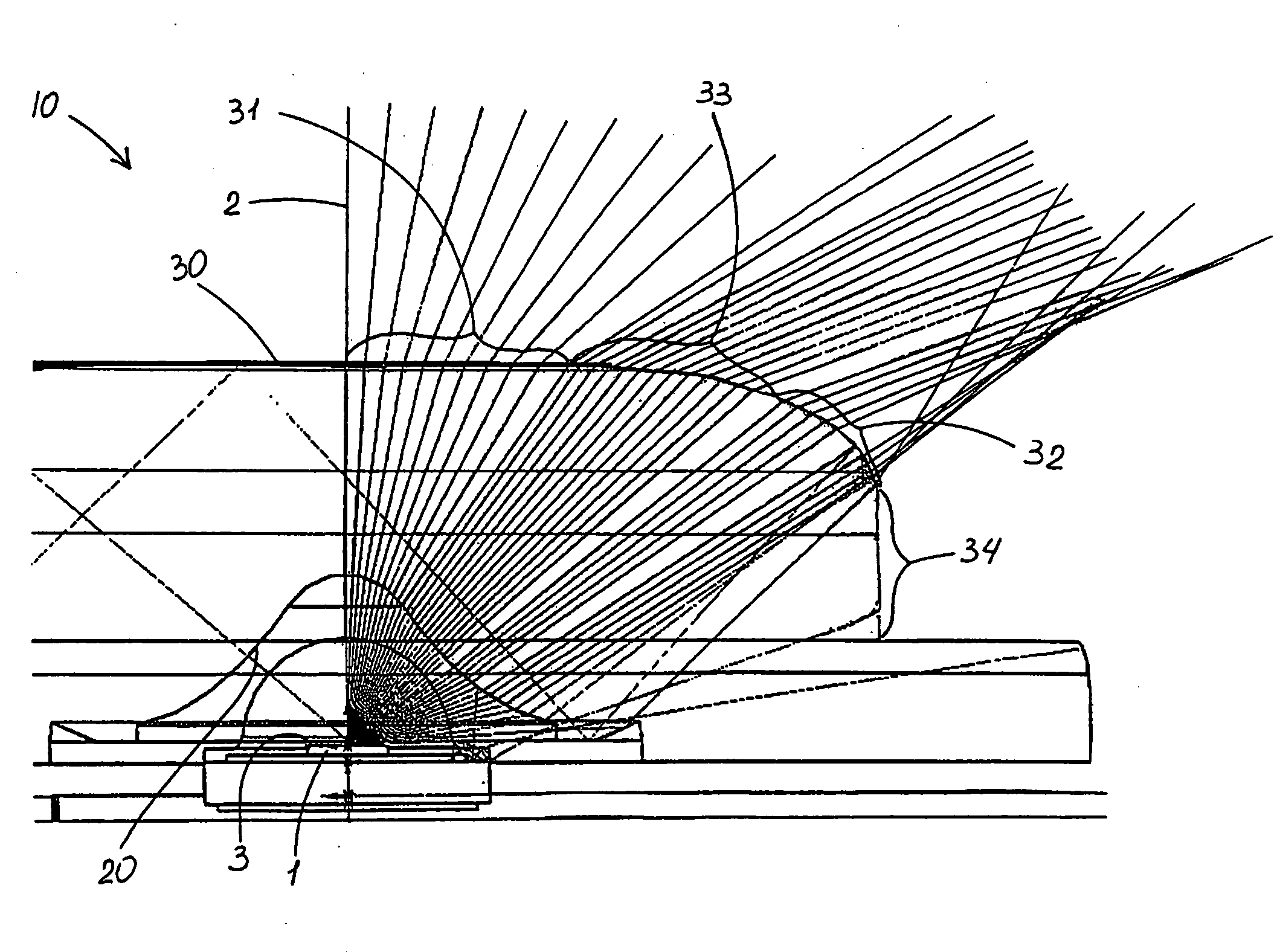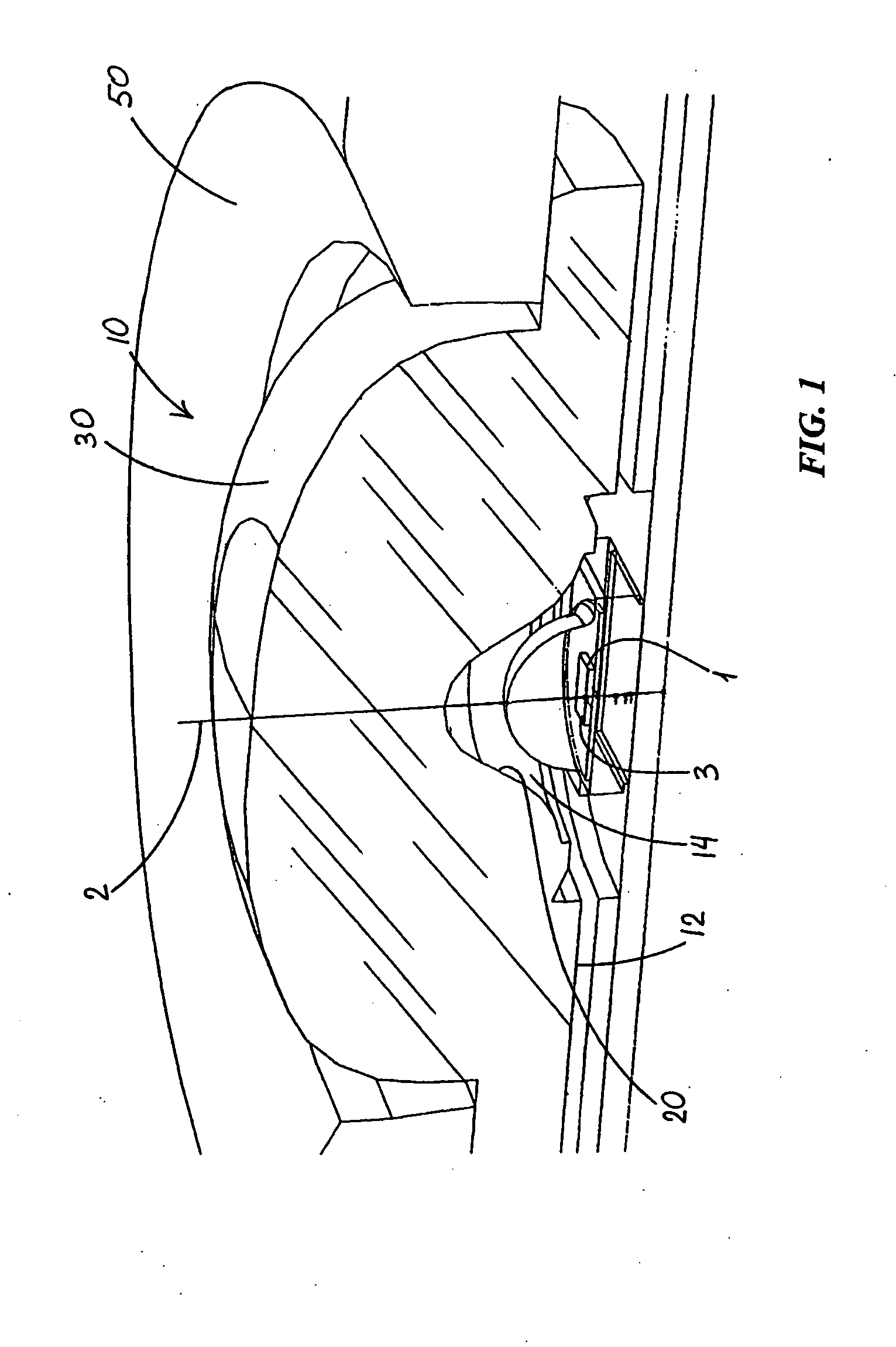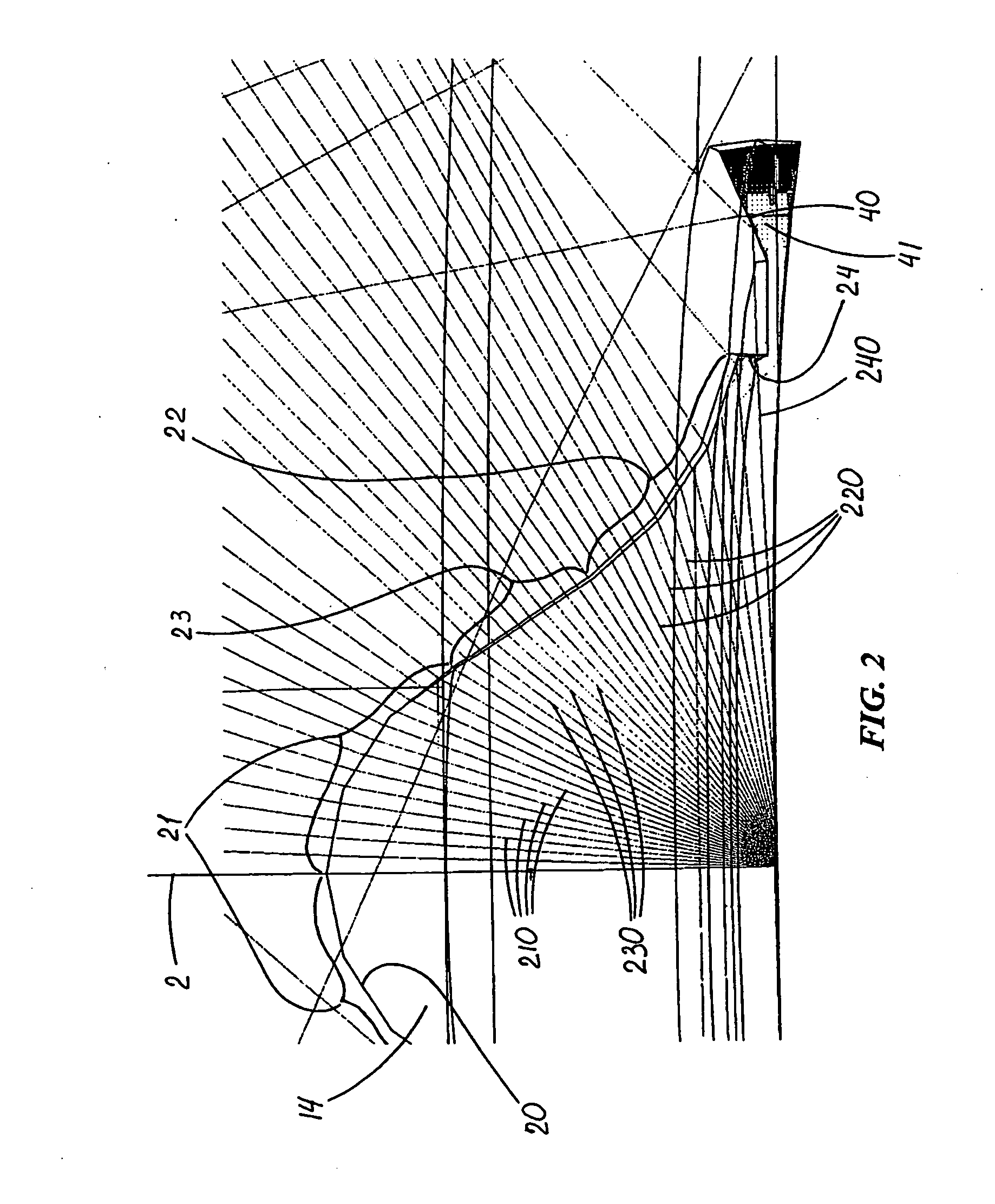Lens with controlled light refraction
a technology of controlled light refraction and light output, which is applied in the direction of optics, condensers, instruments, etc., can solve the problems of less than fully efficient illumination patterns, led-emitted light is often lost, and the light output of the lens is often short of the most highly desirable performance, so as to improve the control of the direction of light exiting the optics and improve the light output efficiency.
- Summary
- Abstract
- Description
- Claims
- Application Information
AI Technical Summary
Benefits of technology
Problems solved by technology
Method used
Image
Examples
Embodiment Construction
[0027]FIGS. 1-7 illustrate lens 10 which is a preferred embodiment of the invention. Lens 10 is for directing light from a light emitter 1 which has an emitter axis 2 and defines an emitter plane 3. Lens 10 includes an emitter-adjacent base end 12 forming an opening to an inner cavity 14 surrounding emitter 1. Cavity 14 defines a space between emitter 1 and an inner-cavity surface 20 such that emitter light goes through air to enter lens material at inner-cavity surface 20. Because air and the lens material, which may be acrylic or other suitable material, have different refraction indexes resulting in bending of the light at inner-cavity surface 20.
[0028]FIG. 2 best shows configuration of inner-cavity surface 20 which includes an axis-adjacent first inner region 21, a second inner region 22 spaced from first inner region 21, and a middle inner region 23 which joins first and second regions 21 and 22 and is substantially asymptotical to first and second inner regions 21 and 22.
[0029...
PUM
 Login to View More
Login to View More Abstract
Description
Claims
Application Information
 Login to View More
Login to View More - R&D
- Intellectual Property
- Life Sciences
- Materials
- Tech Scout
- Unparalleled Data Quality
- Higher Quality Content
- 60% Fewer Hallucinations
Browse by: Latest US Patents, China's latest patents, Technical Efficacy Thesaurus, Application Domain, Technology Topic, Popular Technical Reports.
© 2025 PatSnap. All rights reserved.Legal|Privacy policy|Modern Slavery Act Transparency Statement|Sitemap|About US| Contact US: help@patsnap.com



